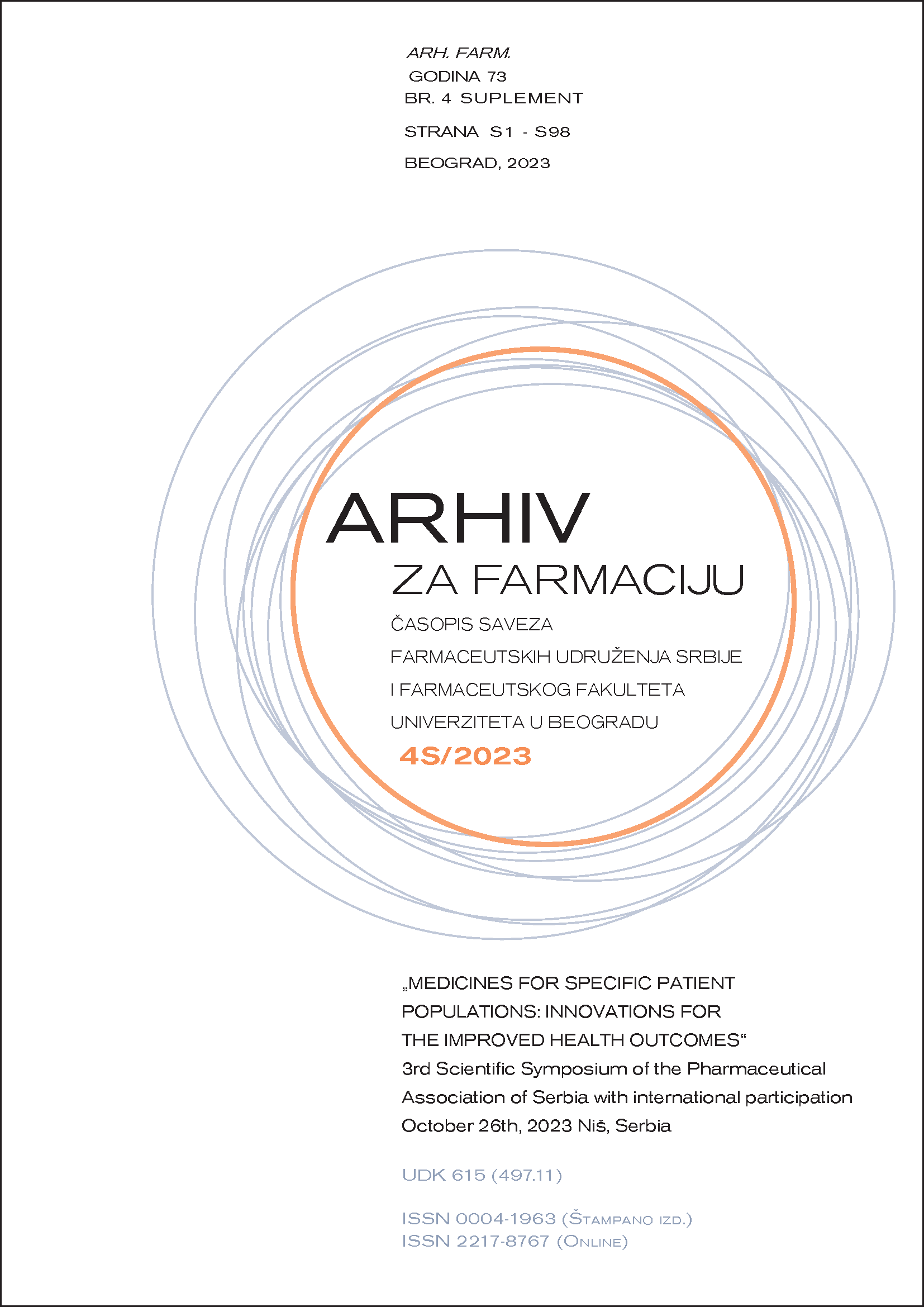REFLUX EXTRACTION OPTIMIZATION FOR TOTAL EXTRACTIVE MATTER OF DWARF MARIGOLD (Tagetes patula L.) FLOWER PETALS
Abstract
Dwarf marigold (Tagetes patula L., Asteraceae) flowers with their yellow, orange, or a mix of these two shades of petals decorate gardens all over the globe. The pharmacological activities of dwarf marigold include analgesic, antiinflammatory, antioxidant, anti-microbial, nematocidal, and insecticidal activity, while the phytochemistry studies revealed the presence of thiophens, glycosides, carotenoids, flavonoids, anthocyanins, one alkaloid ((+) jafrine), and terpenes (1). The present study aimed to determine the optimum reflux extraction conditions for total extractive matter (TEM) of ethanolic extracts from marigold flower petals by using the central composite design (CCD) of response surface methodology (RSM). The TEM was determined gravimetrically by oven drying at 105 °C until a constant weight was reached. Sample to solvent ratio (solvomodule 1:10, 1:20, and 1:30 m/V); ethanol concentration (20%, 58%, and 96% V/V); extraction temperature (40°C, 55°C, and 70°C); and extraction time (20 min, 50 min, and 80 min) were factors applied to determine the optimum conditions. Twenty-eight runs were done. According to the regression model used, the extraction time was not a statistically important factor (p>0.05). The optimal conditions predicted were an ethanol concentration of 33.84%, an extraction temperature of 70°C, and a solvomodule of 1:10 m/V, with the TEM values predicted to be in the range of 24.68714-29.17208 mg/ml. The TEM value obtained experimentally under optimal conditions was 26.92958 mg/ml, indicating a good correlation with the model used. The determination of the chemical composition of the extracts obtained will be the subject of our future studies.
References
1. Riaz M., Ahmad R., Rahman N.U., Khan Z., Dou D., Sechel G., Manea R. Traditional uses, Phyto-chemistry and pharmacological activities of Tagetes Patula L., J. Ethnopharmacol. 2020; 255: 112718

